Solar Installers Gosforth
Top 10 Residential Solar Installers in Gosforth
Receive up to 3 Residential Solar Installers quotes for your project today! Compare profiles, reviews, accreditations, portfolio, etc... and choose the best service.

Cosmic Energy NE LTD
22 Ridley Place, Newcastle upon Tyne, NE1 8JW, GBCosmic Energy are an MCS certified leading provider of solar panels, and renewable energy products in North East England and nationwide, for both homes and business. With over 40 years of experience in the energy sector, we offer a range of solar and renewable products and services. Cosmic Energy is a provider of Solar panels in North East England and nationwide, for both homes and businesses. With over 40 years of experience, we are committed to helping our customers reduce their energy costs and environmental impact. Our renewable energy solutions enable you to generate and store your own heat and electricity from the nature's own energy sources. This can save you hundreds or even thousands of pounds per year on your energy bills, while also helping to reduce your carbon footprint.
- Services
- Why Us?
- Accreditations
- Testimonials
- Gallery
Get Quote
Same Electricals Ltd, Electrician, EV Charger Installers & Solar PV Installers
510 reviews14 Fennel Grove, South Shields, NE34 8TH, GBBased within South Tyneside we are at the heart of the North East. We are happy to travel to all surrounding areas to get your job done!We're fully qualified electricians and solar installers and take a great amount of pride in our work. You can rest easy knowing your project is handled by qualified professionals. Reliable... We always turn up on time and if for whatever reason we are running late we will make sure to let you know! Friendly... We turn up with a smile and make sure we put our clients safety, needs and satisfaction first. Meticulous... We take a huge amount of pride in our work, complete it to the highest standards possible and only use quality materials. WE DO IT ALL From changing faceplates and adding sockets, to full rewires and solar installations, we offer every electrical service any property could ever need.Whether your project is big or small we'll never turn you away. Each job will be completed to the highest of standards, no matter the challenges and your home will always be left clean and tidy. INSIDE OR OUT External lighting and power will make a huge difference to your property, both aesthetically and functionally. External sockets means quick access for the lawn mower and jet wash while external lights help you see at night and helps to secure your home.We can also offer full CCTV or smart camera installation, security door bells and alarm system installations to secure your home. My name is Sam Elliott, I established Same Electricals Ltd to provide a quality electrical installation service to the North East of England.I grew up in a family full of trades from dryliners, joiners, electricians, and decorators and have always worked in the trades myself. I have been taught from day one to take pride in my work and provide the highest quality service I possibly can, this is something I truly believe in.I wish to see Same Electricals go from strength to strength and hope you can join us on the journey! No job is too big or small, just get in touch and we will get you sorted! Sam ElliottElectrician & Owner CONTACT US Need a qualified, competent electrician?Fill out the form and we will be in contact with you as soon as possible to discuss your work.We offer free no-obligation quotations that are accompanied by an on-site visit where we can discuss the requirements of your project.Fill in the form or contact us using these methods below:[email protected]07436992911
- Services
- Why Us?
- Accreditations
- Our Team
- Testimonials
- Gallery
Get Quote
Siemens Gamesa Renewable Energy
Parque Tecnológico de Bizkaia, Edificio 222, Zamudio, 48170, GBSiemens Gamesa Renewable Energy is a global leader in the wind energy sector, committed to providing innovative and sustainable solutions for a cleaner energy future. With a rich history dating back to 1991, the company has pioneered the offshore wind industry and continues to drive advancements in wind turbine technology. Siemens Gamesa offers a comprehensive portfolio of onshore and offshore wind turbines, as well as a range of service and maintenance solutions. The company's global presence spans over 90 countries, with a dedicated team of engineers, technicians, and experts working to deliver exceptional customer experiences. Siemens Gamesa is committed to environmental responsibility, social impact, and ethical business practices, striving to create a sustainable and inclusive world through wind energy.
- Services
- Why Us?
- Accreditations
- Our Team
- Testimonials
- Gallery
Get Quote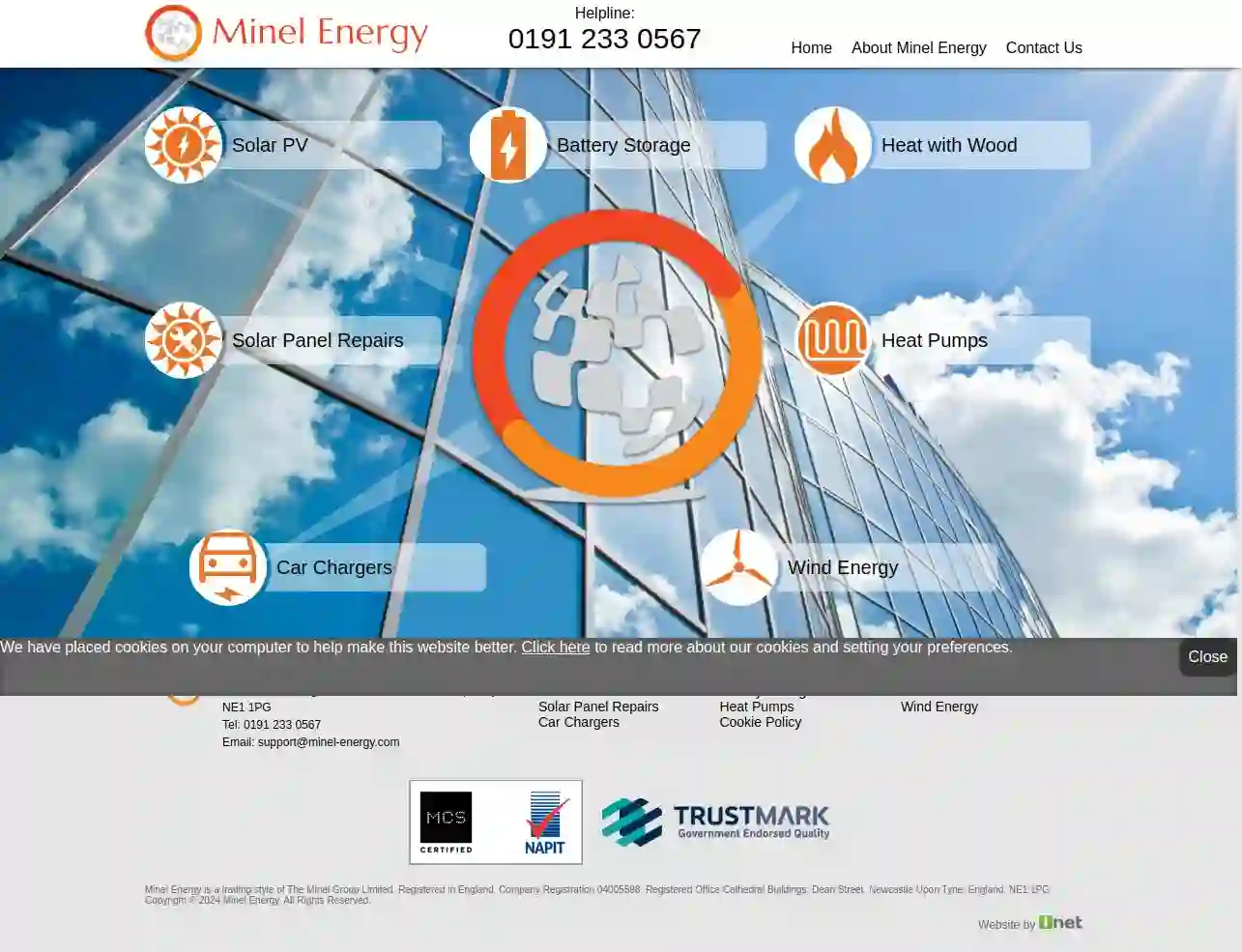
Minel Energy
4.952 reviewsDean Street, Cathedral Buildings, Newcastle Upon Tyne, NE1 1PG, GBMinel Energy is a trading style of The Minel Group Limited. Registered in England, Company Registration 04005598. Registered Office Cathedral Buildings, Dean Street, Newcastle Upon Tyne, England, NE1 1PG. Copyright © 2024 Minel Energy. All Rights Reserved. Website by Close We have placed cookies on your computer to help make this website better. Click here to read more about our cookies and setting your preferences.
- Services
- Why Us?
- Gallery
Get Quote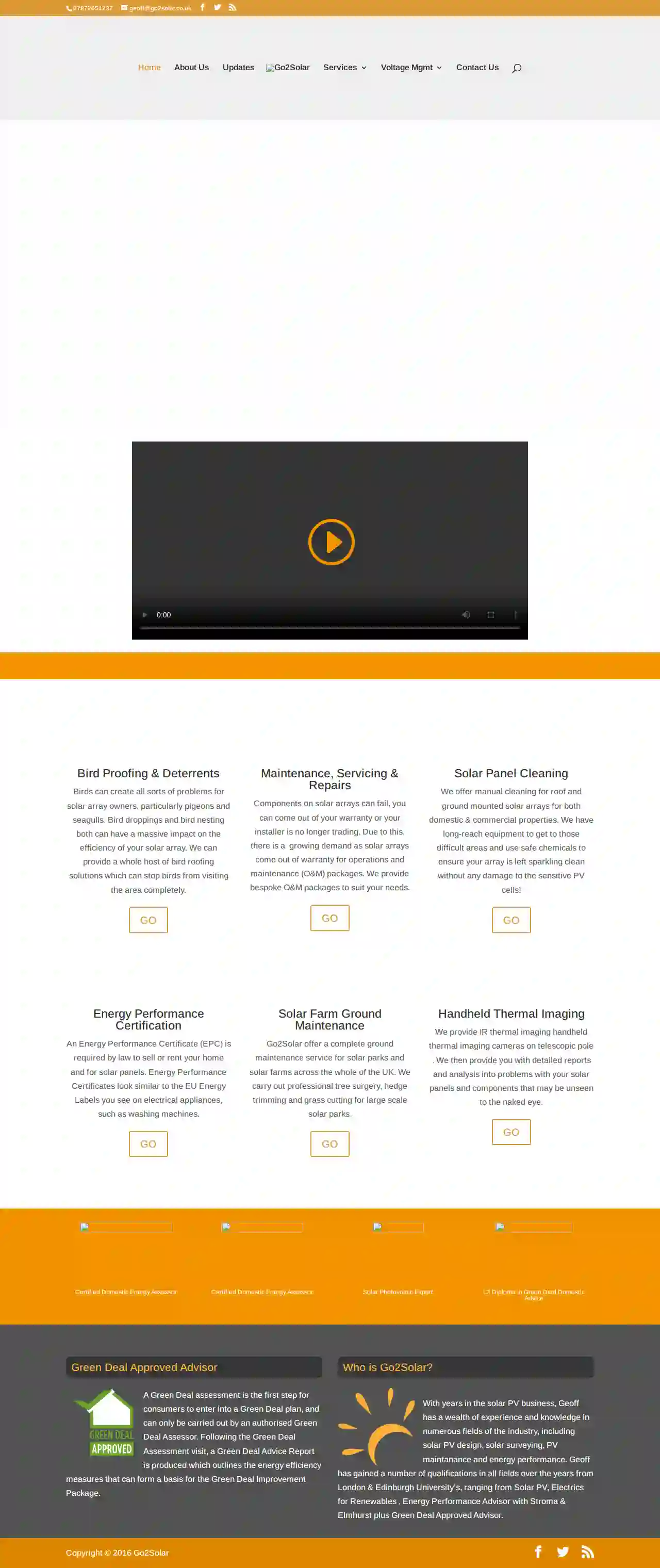
Go2solar
51 reviewsNewcastle, GBGo2Solar is a company with years of experience in the solar PV industry. Geoff, the owner, has a wealth of knowledge in various fields, including solar PV design, surveying, maintenance, and energy performance. He holds numerous qualifications from prestigious institutions like London & Edinburgh Universities, covering areas like Solar PV, Electrics for Renewables, Energy Performance Advisor (Stroma & Elmhurst), and Green Deal Approved Advisor. Go2Solar offers a comprehensive range of services to meet the needs of both domestic and commercial clients. Our services encompass bird proofing, maintenance and repairs, solar panel cleaning, energy performance certification, ground maintenance for solar farms, and handheld thermal imaging. We are committed to providing high-quality, reliable services to ensure the optimal performance and longevity of your solar energy systems. Go2Solar is dedicated to helping you make the most of your solar investment. Contact us today to learn more about our services and how we can assist you.
- Services
- Why Us?
- Our Team
- Gallery
Get Quote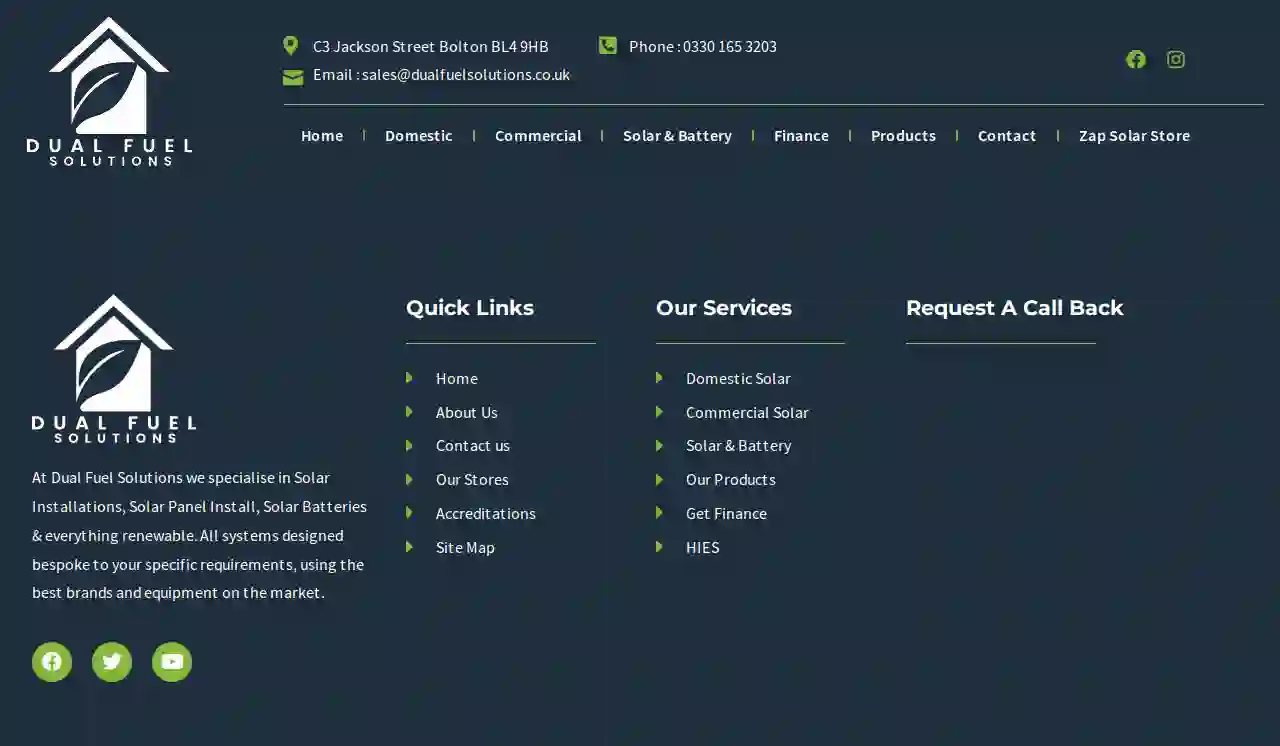
Zap Solar
C3 Jackson Street, Bolton, BL4 9HB, GBAt Dual Fuel Solutions we specialise in Solar Installations, Solar Panel Install, Solar Batteries & everything renewable. All systems designed bespoke to your specific requirements, using the best brands and equipment on the market.
- Services
- Why Us?
- Accreditations
- Gallery
Get Quote
GEC Power
4.128 reviewsUnit 22A, Airport Ind Est., Unit 22A Airport Ind Est., Newcastle upon Tyne, NE3 2EF, GBGEC Power is a company dedicated to helping UK homeowners and businesses reduce their energy bills and carbon footprint through sustainable energy solutions. They offer a range of services, including solar PV, boiler installations, air source heat pumps, and EV chargers. GEC Power emphasizes providing expert advice, quality installations, and hassle-free energy management. Their goal is to empower communities to take control of their energy consumption and contribute to a greener future.
- Services
- Why Us?
- Accreditations
- Our Team
- Testimonials
- Gallery
Get Quote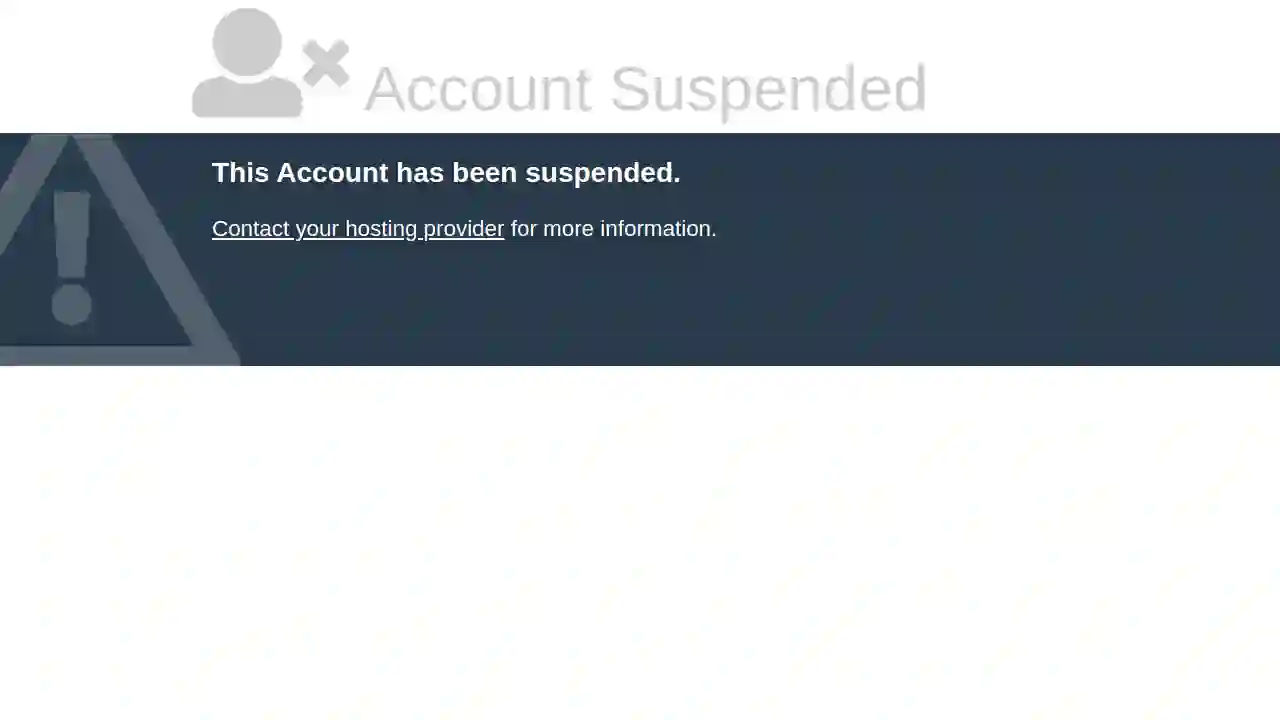
Greener Energy NE Ltd
2.17 reviewsNewcastle, GBAccount Suspended This Account has been suspended. Contact your hosting provider for more information.
- Services
- Why Us?
Get Quote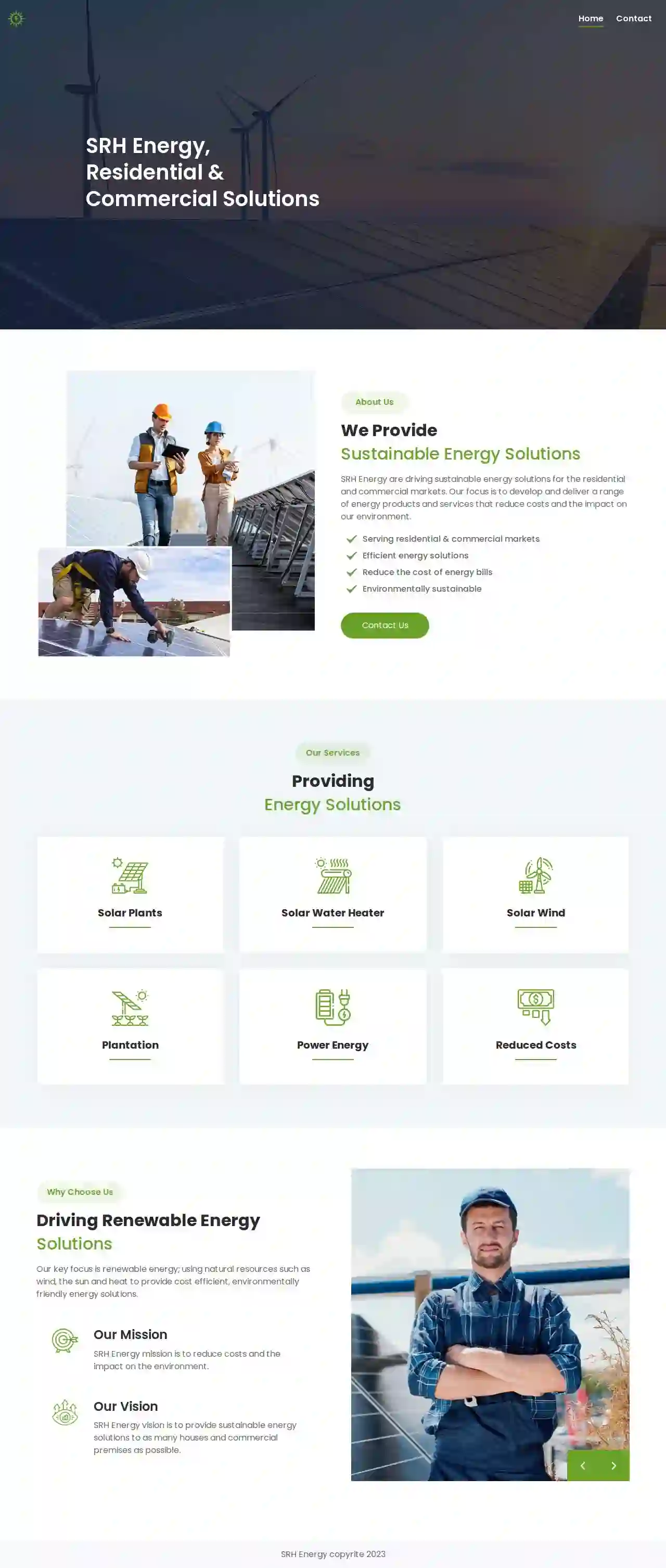
SRH Energy
Jarrow Business Centre, Rolling Mill Road, Jarrow, NE32 3DT, GBSRH Energy are driving sustainable energy solutions for the residential and commercial markets. Our focus is to develop and deliver a range of energy products and services that reduce costs and the impact on our environment.
- Services
- Why Us?
- Gallery
Get Quote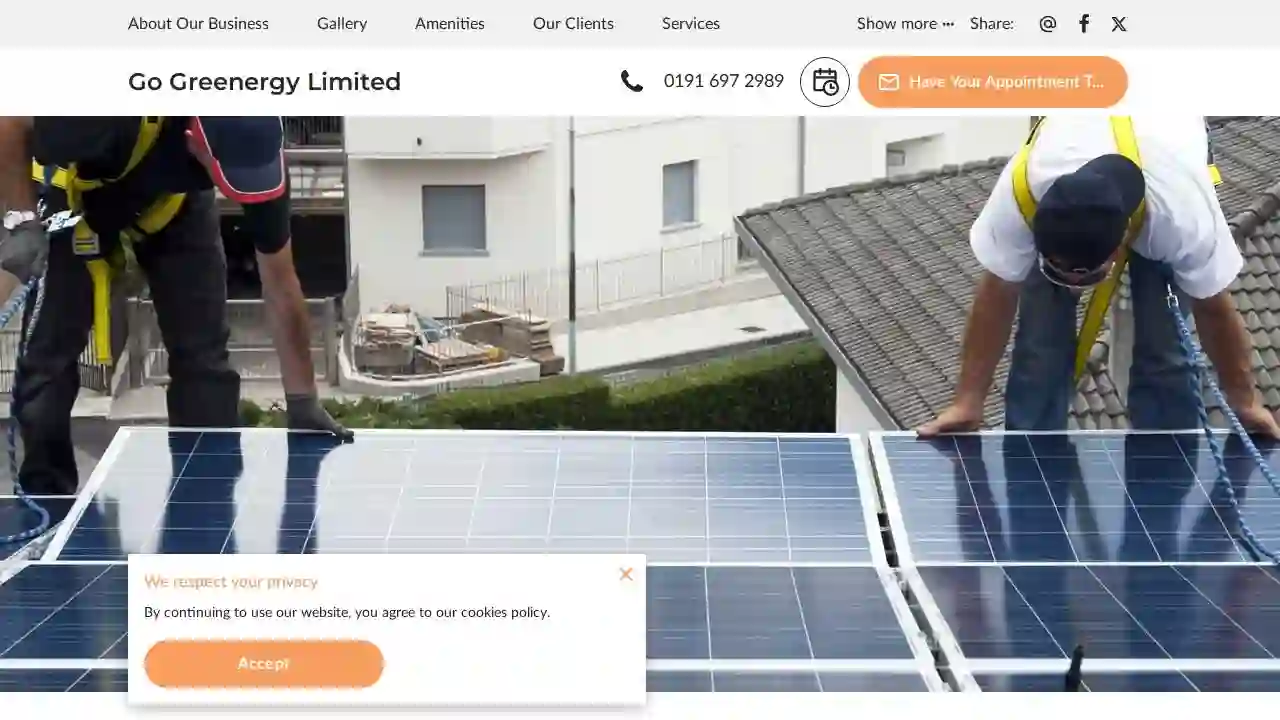
Go Greenergy Limited
Newcastle upon Tyne, GBGo Greenergy Limited is a leading provider of top-quality solar panel and renewable energy solutions in Newcastle upon Tyne. We serve both residential and commercial clients, offering cost-effective installations using premium components. Our mission is to empower everyone to embrace the benefits of renewable energy. We pride ourselves on our high-quality workmanship and commitment to customer satisfaction. Whether you're looking to reduce your energy bills, minimize your environmental impact, or both, Go Greenergy is here to help. Contact us today to learn more about how we can tailor a renewable energy solution to your specific needs. Our team of dedicated experts will work closely with you to design and install a system that maximizes power output while minimizing costs. We offer a range of services, including energy auditing, green energy finance schemes, design of integrated energy systems, and waste management solutions. At Go Greenergy, we believe that everyone deserves access to clean, sustainable energy. We are committed to providing our clients with the highest level of service and support throughout the entire process, from initial consultation to system installation and ongoing maintenance.
- Services
- Why Us?
- Testimonials
Get Quote
Over 3,485+ Solar Companies on our directory
Our solar companies operate in Gosforth and surroundings!
SolarCompaniesHub has curated and vetted Top Solar Businesses in and around Gosforth. Find a reliable contractor today.
Frequently Asked Questions About Solar Installers
- Contact SolarCompaniesHub: We make it simple to connect with reputable Solar Installers in your area.
- Get Free Quotes: Request free quotes from multiple installers to compare prices, systems, and warranties.
- Schedule a Site Assessment: A qualified installer will visit your property to assess your roof, energy needs, and discuss your goals.
- Review Your Proposal and Contract: Carefully review the proposed system, financing options, and warranties before signing a contract.
- Installation and Activation: Once the contract is signed, the installer will obtain necessary permits, schedule the installation, and activate your solar system.
Can I go completely off-grid with solar panels?
What happens if my roof needs to be replaced after I install solar panels?
How do I get started with solar panel installation?
Will solar panels work during cloudy days or at night?
Can I go completely off-grid with solar panels?
What happens if my roof needs to be replaced after I install solar panels?
How do I get started with solar panel installation?
- Contact SolarCompaniesHub: We make it simple to connect with reputable Solar Installers in your area.
- Get Free Quotes: Request free quotes from multiple installers to compare prices, systems, and warranties.
- Schedule a Site Assessment: A qualified installer will visit your property to assess your roof, energy needs, and discuss your goals.
- Review Your Proposal and Contract: Carefully review the proposed system, financing options, and warranties before signing a contract.
- Installation and Activation: Once the contract is signed, the installer will obtain necessary permits, schedule the installation, and activate your solar system.